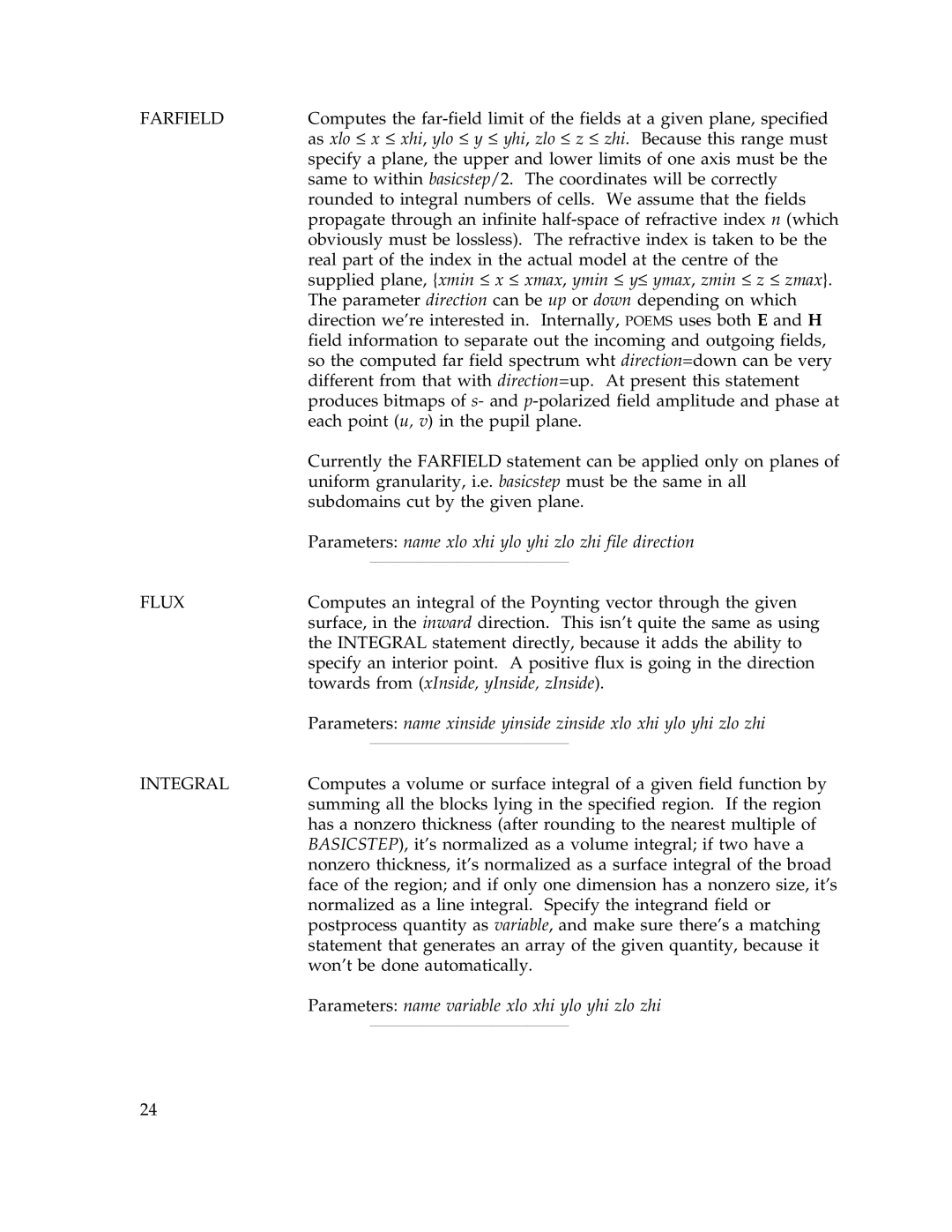FARFIELD | Computes the | ||
| as xlo ≤ x ≤ xhi, ylo ≤ y ≤ yhi, zlo ≤ z ≤ zhi. Because this range must | ||
| specify a plane, the upper and lower limits of one axis must be the | ||
| same to within basicstep/2. The coordinates will be correctly | ||
| rounded to integral numbers of cells. We assume that the fields | ||
| propagate through an infinite | ||
| obviously must be lossless). The refractive index is taken to be the | ||
| real part of the index in the actual model at the centre of the | ||
| supplied plane, {xmin ≤ x ≤ xmax, ymin ≤ y≤ ymax, zmin ≤ z ≤ zmax}. | ||
| The parameter direction can be up or down depending on which | ||
| direction we’re interested in. Internally, POEMS uses both E and H | ||
| field information to separate out the incoming and outgoing fields, | ||
| so the computed far field spectrum wht direction=down can be very | ||
| different from that with direction=up. At present this statement | ||
| produces bitmaps of s- and | ||
| each point (u, v) in the pupil plane. | ||
| Currently the FARFIELD statement can be applied only on planes of | ||
| uniform granularity, i.e. basicstep must be the same in all | ||
| subdomains cut by the given plane. | ||
| Parameters: name xlo xhi ylo yhi zlo zhi file direction | ||
|
|
|
|
FLUX | Computes an integral of the Poynting vector through the given | ||
| surface, in the inward direction. This isn’t quite the same as using | ||
| the INTEGRAL statement directly, because it adds the ability to | ||
| specify an interior point. A positive flux is going in the direction | ||
| towards from (xInside, yInside, zInside). | ||
| Parameters: name xinside yinside zinside xlo xhi ylo yhi zlo zhi | ||
|
|
|
|
INTEGRAL | Computes a volume or surface integral of a given field function by | ||
| summing all the blocks lying in the specified region. If the region | ||
| has a nonzero thickness (after rounding to the nearest multiple of | ||
| BASICSTEP), it’s normalized as a volume integral; if two have a | ||
| nonzero thickness, it’s normalized as a surface integral of the broad | ||
| face of the region; and if only one dimension has a nonzero size, it’s | ||
| normalized as a line integral. Specify the integrand field or | ||
| postprocess quantity as variable, and make sure there’s a matching | ||
| statement that generates an array of the given quantity, because it | ||
| won’t be done automatically. | ||
| Parameters: name variable xlo xhi ylo yhi zlo zhi | ||
|
|
|
|
24
